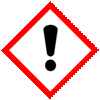CAS Number 110-17-8, Fumaric Acid IP USP NF Analytical Reagent FCC Food Grade Manufacturers Exporters also Encapsulated Fumaric Acid







CAS Number 110-17-8, Fumaric Acid Manufacturer Exporter
also Encapsulated Fumaric Acid
For Properties Specifications of Fumaric Acid and Encapsulated Fumaric Acid Click Properties, Specifications of Fumaric Acid Manufacturer.
For Uses of Fumaric Acid Click Uses of Fumaric Acid Manufacturer.
For For SDS MSDS Sheet of Fumaric Acid Click SDS Safety Data Sheet MSDS Sheet of Fumaric Acid Manufacturer.
The Properties and Specifications of Fumaric Acid:
Fumaric Acid USP NF Grade Specifications
C4H4O4 --- 116.07
2-Butenedioic acid, E-.
Fumaric acid CAS 110-17-8
Fumaric Acid contains not less than 99.5 percent and not more than 100.5 percent of C4H4O4, calculated on the anhydrous basis.
Identification: Dissolve about 10 mg in 25 mL of water, and to this solution add 1 mL of a solution prepared by mixing 20 mL of copper sulfate solution (1 in 5) and 8 mL of pyridine: a precipitate is formed in the blue solution within 1 minute.
Water: 0.5%.
Residue: not more than 0.1%.
Heavy metals: 0.001%.
Limit of maleic acid: To pass the test. Not more than 0.1% of maleic acid is found.
Organic volatile impurities: meets the requirements.
Assay: Transfer about 1 g of Fumaric Acid, accurately weighed, to a conical flask, add 50 mL of methanol, and warm gently on a steam bath to effect solution. Cool, add phph TS, and titrate with 0.5 N sodium hydroxide VS to the first appearance of a pink color that persists for not less than 30 seconds. Perform a blank titration, and make any necessary correction. Each mL of 0.5 N sodium hydroxide is equivalent to 29.02 mg of C4H4O4.
Fumaric Acid FCC Food Grade Specifications
(E)-Butenedioic Acid; trans-1,2-Ethylenedicarboxylic Acid
C4H4O4 Formula weight 116.07
INS: 297 CAS 110-17-8
FEMA: 2488
DESCRIPTION
Fumaric Acid occurs as white granules or as a crystalline powder. A 1:30 aqueous solution has a pH of 2.0 to 2.5. It is soluble in alcohol, slightly soluble in water and in ether, and very slightly soluble in chloroform.
Function: Acidifier; flavoring agent.
REQUIREMENTS
Identification: The infrared absorption spectrum.
Assay: Not less than 99.5% and not more than 100.5% of C4H4O4, calculated on the anhydrous basis.
Lead: Not more than 2 mg/kg.
Maleic Acid: Not more than 0.1%.
Residue on Ignition: Not more than 0.1%.
Water: Not more than 0.5%.
We also offer Fumaric Acid IP Grade.
We also supply Hydrogenated Oil Coated Encapsulated Fumaric Acid
The Uses of Fumaric Acid:
Fumaric Acid is used to make paints and plastics, in food processing and preservation, and for other uses. It has a role as a food acidity regulator, a fundamental metabolite and a geroprotector. It has a fruit-like taste and has been used as a food additive. It is currently used in wheat and corn tortillas, sour dough and rye breads etc.
The MSDS-SDS Hazard Statement of Fumaric Acid:
Fumaric Acid GHS SDS, Safety Data Sheet
MSDS Sheet, Material Safety Data Sheet 11-Jan-23
1. Product Identification
Product Name & Other Names: Fumaric Acid or 2-Butenedioic acid; Boletic acid
CAS No.: 110-17-8
EINICS EC-No.: 203-743-0
Molecular Weight: 116.07
Chemical Formula: HOOCCH=CHCOOH
Relevant uses and uses advised against (if any): Industrial Manufacturing.
2. Hazards Identification
GHS, Globally Harmonized System Classification in accordance with 29 CFR 1910
Classification according to Regulation (EC) No 1272/2008
Serious eye damage/eye irritation Category 2A, H319
Labeling according to GHS & Regulation (EC) No 1272/2008
GHS Label Elements  Irritant |
Signal Words: Warning
Hazard statements:
H319: Causes serious eye irritation.
Precautionary statements:
P264: Wash skin thoroughly after handling.
P280: Wear protective gloves/protective clothing/eye protection/face protection.
P305+ P351 + P338 IF IN EYES: Rinse cautiously with water for several minutes. Remove contact lenses, if present and easy to do. Continue rinsing.
P337+P313 If eye irritation persists: Get medical advice/ attention.
3. Composition/Information on Ingredients
Product Name & Other Names: Fumaric Acid or 2-Butenedioic acid; Boletic acid
CAS No.: 110-17-8
EINICS EC-No.: 203-743-0
4. First Aid Measures
Always get medical attention after the first aid is over.
Inhalation: If inhaled, remove to fresh air. If not breathing, give artificial respiration. If breathing is difficult, give oxygen and get medical attention immediately.
Ingestion: Never give anything by mouth to an unconscious person. Get medical attention.
Skin Contact: Immediately flush skin with plenty of water for at least 15 minutes while removing contaminated clothing and shoes. Get medical attention. Wash clothing and shoes before reuse.
Eye Contact: Immediately flush eyes with plenty of water for at least 15 minutes, lifting lower and upper eyelids occasionally. Get medical attention immediately.
5. Fire Fighting Measures
Fire: As with most organic solids, fire is possible at elevated temperatures or by contact with an ignition source.
Explosion: Fine dust dispersed in air in sufficient concentrations, and in the presence of an ignition source is a potential dust explosion hazard.
Fire Extinguishing Media: Water spray, dry chemical, alcohol foam, or carbon dioxide.
Special Information: In the event of a fire, wear full protective clothing and NIOSH-approved self-contained breathing apparatus with full face piece operated in the pressure demand or other positive pressure mode.
6. Accidental Release Measures
Personal precautions, protective equipment, and emergency procedures: Ventilate area of leak or spill. Avoid breathing dust/fumes/gas/mist/vapors/spray. Use individual protective equipment (waterproof boots, suitable protective clothing, safety glasses, etc.). Do not approach facing the wind.
Environmental precautions: Do not let the product enter drains, soil, or water sources.
Methods and materials used for containment Cleanup procedures and Storage: Eliminate all ignition sources. Contain spilled material. Cover with an inert, non-combustible absorbent material, (e.g. sand, earth, diatomaceous earth, vermiculite). Vacuum or sweep-up and remove to an approved disposal container. Finish cleaning by spreading water on the contaminated surface and allow to evacuate as per law.
7. Handling and Storage
Precautions for safe handling: Apply according to good manufacturing and industrial hygiene practices. Ensure proper ventilation. In case of insufficient ventilation, wear suitable respiratory equipment. Wash thoroughly after handling. Do not drink, eat, or smoke while handling. Avoid contact with skin, eyes, and clothing. Minimize dust generation. Avoid breathing dust/fumes/gas/mist/vapors/spray. Keep container tightly closed. Avoid ingestion and inhalation. Use individual protective equipment (waterproof boots, suitable protective clothing, safety glasses, etc.).
Conditions for safe storage, including any incompatibilities: Store in cool, dry, and ventilated area away from heat sources and protected from sunlight in tightly closed original container. Keep air contact to a minimum. Store protected from heat, sparks and ignition sources and incompatible materials. Avoid contact with skin and eyes. Avoid inhalation of dust/mist/vapor. Do not store with incompatible materials like strong oxidizing agents. Avoid dust formation and control ignition sources. Employ grounding, venting and explosion relief provisions in any process capable of generating dust and/or static electricity.
8. Exposure Controls/Personal Protection
Airborne Exposure Limits: None established.
Ventilation System: A system of local and/or general exhaust is recommended to keep employee exposures as low as possible.
Personal Respirators (NIOSH Approved): For conditions of use where exposure to dust or mist is apparent and engineering controls are not feasible, a particulate respirator (NIOSH type N95 or better filters) may be worn.
Skin Protection: Wear impervious protective clothing, including boots, gloves, lab coat, apron or coveralls, as appropriate, to prevent skin contact.
Eye Protection: Use chemical safety goggles and/or full face shield where dusting or splashing of solutions is possible. Maintain eye wash fountain and quick-drench facilities in work area.
Other Control Measures: Maintain good housekeeping in work area. Handle in accordance with good industrial hygiene and safety practice.
9. Physical and Chemical Properties
Appearance: White to off-white crystals or powder.
Odor: Faint odor.
Odor threshold: Not available.
pH: Approximately 2, Acidic.
Relative density: around 1.63
Melting Point: 298 - 300C - lit.
Initial boiling point and boiling range: Not available.
Flash point: Not available.
Auto-ignition temperature: Not available.
Decomposition temperature: Not available.
Upper/lower flammability or explosive limits: Not available.
Vapor pressure: Not available.
Vapor density: Not available.
Evaporation rate: Not available.
Flammability (solid, gas): Not available.
Partition coefficient: n-octanol/water: Not available.
Solubility: Soluble in water.
Viscosity: Not available.
10. Stability and Reactivity
Stability: Stable under ordinary conditions of use and storage.
Hazardous Decomposition Products: Carbon dioxide and carbon monoxide may form when heated to decomposition.
Hazardous Polymerization: Will not occur.
Incompatibilities: Excessive heat, Strong oxidizers.
Conditions to Avoid: Heat, dusting and incompatibles.
11. Toxicological Information
LD50 Oral - Rat - female: 9.300 mg/kg
LD50 Dermal - Rabbit - female: 20.000 mg/kg
LD50 Intraperitoneal - Mouse: 100 mg/kg
Carcinogenicity: No component of this product present at levels greater than or equal to 0.1% is identified as possible or confirmed human carcinogen by IARC, ACGIH, OSHA and NTP.
Mutagenic Effects: Not available.
Developmental Toxicity: Not available.
Reproductive Effects: No information available.
12. Ecological Information Toxicity
Toxicity to fish daphnia and bacteria:
Toxicity to fish mortality: Danio rerio (zebra fish) - 245 mg/l - 48 h
Toxicity to fish semi-static test LC50: Danio rerio (zebra fish) - > 100 mg/l - 96 h
Toxicity to daphnia and other aquatic invertebrates Immobilization EC50: Daphnia magna (Water flea) - 212 mg/l - 48 h
Toxicity to algae Growth inhibition EC50: Pseudokirchneriella subcapitata - > 100 mg/l - 72 h
Toxicity to bacteria Respiration inhibition EC50: activated sludge - > 300 mg/l - 3 h.
Mobility in soil: No data available
This substance/mixture contains no components considered to be either persistent, bioaccumulative and toxic (PBT), or very persistent and very bioaccumulative (vPvB) at levels of 0.1% or higher.
13. Disposal Considerations
Whatever cannot be saved for recovery or recycling should be managed in an appropriate and approved waste disposal facility.
14. Transport Information
DOT USA & ADR/RID Europe: controlled.
TDG Canada: Not controlled.
IATA: Not controlled.
IMDG/IMO: Not controlled.
15. Regulatory Information
USA Regulations:
SARA Section 311/312 (40 CFR 370) Hazard Categories: See section 2.
California Prop 65: This product contains no chemical known by the State of California to cause cancer, birth defects or other reproductive harm.
16. Other Information
Disclaimer:
*****************************
Our company provides this Fumaric Acid MSDS information sheet contained herein in good faith but makes no representation as to its comprehensiveness or accuracy. This SDS sheet is intended only as a guide to the appropriate precautionary handling of the material by a properly trained person using this product. Individuals receiving the information must exercise their independent judgment in determining its appropriateness for a particular purpose.
*****************************
Anmol Chemicals & Pharmaceuticals Pvt. Ltd. is an off-shoot of Anmol Chemicals Taloja. It is located in MIDC Taloja and it is manufacturing pharmaceutical grades of API, Excepients, Food grade and Reagent grade chemicals. Anmol Chemicals & Pharmaceuticals Pvt. Ltd. is a several decades old group of companies, engaged in manufacturing, supplying, distributing, wholesale supplies for actual users, retail or small pack supplies for research and development chemicals, fine and speciality chemicals, pharmaceutical excipients, mineral fortifiers in chemically pure, Analytical reagent grade, IP BP USP Ph Eur EP JP and other pharmaceutical grade monograph including FCC Food grade chemicals and Nutraceuticals, Mineral Fortifiers at best prices.

Fumaric Acid Structure
CAS Number 110-17-8, Fumaric Acid and Encapsulated Fumaric Acid Manufacturer Exporter
ANMOL CHEMICALS & PHARMACEUTICALS Pvt. Ltd.
India, USA, Europe, UAE
TELEPHONE: +912223770100
Navi Mumbai, INDIA
e-mail: info(At the rate i.e. @)anmol.org
Copyright. 16-sep-25
We manufacture:

